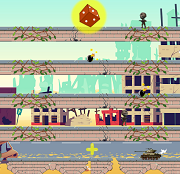Different types of landforms science game
This science game helps children practice about different type of landforms. Landforms can be described as different types of mountains and valleys. Each type of landform has a unique origin, and they can be found on different continents. These landforms can be created by tectonic plate movement and erosion as well as volcanoes. We will also discuss their relation to earth's climate, geology, and other factors.
Biogenic landforms
Biogenic landforms can be described as topographic features that are created by organisms. They can be diverse in their type and extent, and they are responsible for most topographic features that are formed by weathering of rocks. These landforms are formed by many types of organisms. Examples of these organisms include root wedging, bacterial activity and lichens. The key factor in tropical karst is Humic acid, which is a result of rapid organic decay.
Modern highway construction is an example of a biogenic landform that has been important in recent times. This development has caused a lot of changes to the landscape. Some areas have seen mountains destroyed and valleys reduced. The flow patterns of rivers have been drastically affected by large dams. Some areas saw significant subsidence and groundwater loss. These biogenic landforms can partly be attributed to human activities. A growing number of them are being observed around the world.
Movement of tectonic plates
Massive stresses can result when tectonic plates slide over each other. These stresses can cause rocks to fracture and create faults. California's San Andreas Fault is an example. Residents who live near the fault experience frequent shallow earthquakes. This is also responsible to the formation of volcanoes. Landforms are affected by the movement of tectonic plate.
Slowly, tectonic plates move. They move by only a few centimeters each year. Individual plates can vary in size, from Africa to Saudi Arabia, and may contain different amounts of water and land. They can also reach seventy km below the Earth's surface. They move and cause continents to shift or fracture, which can lead to earthquakes and mountain ranges. The movement of tectonic plate also has an impact on the global climate.
Erosion
Erosion refers to the process whereby natural elements cause soil erosion and other landforms. This occurs most often on the planets' surface. This natural process can produce different kinds of landforms. Fluvial erosion, which is the most common form of erosion on Earth, is one example. Water transports sediment and other natural debris across the ground. This eventually creates landforms like canyons, floodplains, and levees.
The erosion process is also caused by the wind. Winds are responsible for removing soil and rock, reducing the size of hills and creating valleys, ravines and ditches. The Environmental Protection Agency uses a rating system to monitor land erosion activity. Because erosion is a natural process, it can drastically alter landscapes. It is important that you understand this. While erosion can also lead to new landforms, it is important to pay attention to preserve the most valuable features. The landscape's erosion rate is increased by human activities like agriculture, logging, mining.
Volcanic activity
Volcanic activity, one of nature's most powerful phenomena, can cause major economic and human disasters if it is not managed properly. Although not all volcanic eruptions cause disaster, the ones that do result in death are considered to be catastrophic. The eruption of Mount Vesuvius, in Italy, destroyed the ancient cities Pompeii and Herculanum. This kind of activity alters landscapes and erodes rock formations.
Volcanic activity can be anything from the release of gases and lava to very violent explosions that last for several hours. The eruption type determines the volume and shape of volcanic material and lava flows. Some eruptions can last for decades while others may only last a few days. Volcanoes can change rapidly in shape and size. The effects of volcanic activity can't be predicted. However, the results have been amazing. Some volcanoes have been extinct while their cones create majestic mountain peaks.
Faulting and folding
The movement of earth's plates causes faults and folds. They create mountains and other stunning landscapes. Each of these phenomena are manifestations of the Earth's energy, and the existence of faults and folds is an indication of Earth's ability maintain stability. The Rocky Mountain fault in Montana, for example, is an example of a fold that has been opened. When sediments are deposited horizontally and then folded up or down by compressional and extension forces, it is called folding.
Earthquakes can occur when the Earth's crust is deformed through folding and faulting. The continental crust is also associated with folded mountains that form near convergent plates boundaries. When the pressure on fold mountains exceeds a breaking point, faulting may occur. These cracks can also be caused by extensional forces, which cause cracks in Earth's crust. These processes result in steep valleys or cliffs.
Wind power
Wind is an excellent source of renewable energy. Strong winds can also create unique landforms and plateaus. The majority of desert landscapes are the result continuous wind erosion. You can visualize the impact of erosion on landscapes over a geologic period to understand its effects. Wind erosion does not cause landscapes to change over time. Some landscapes have changed over many thousands of years. Learn more about desert landscapes and the role of wind in their creation.











